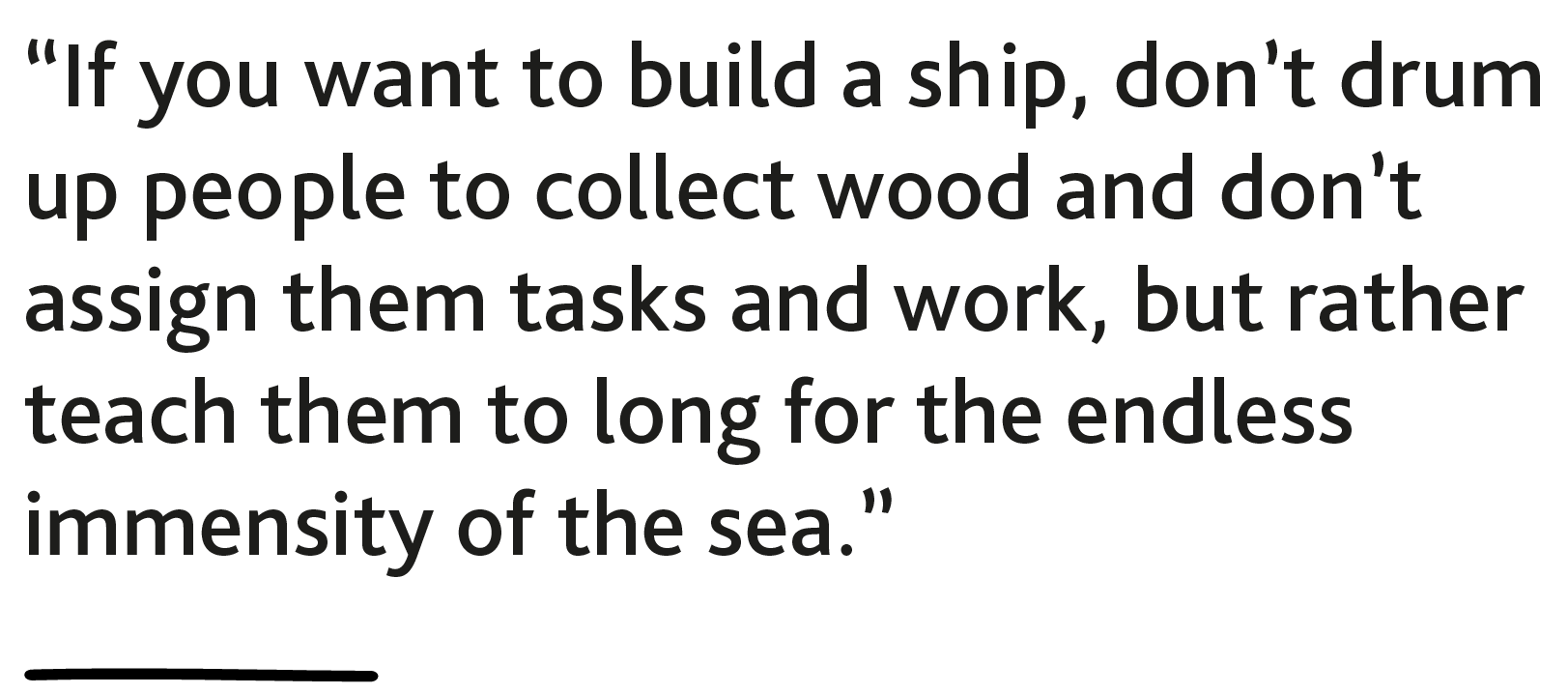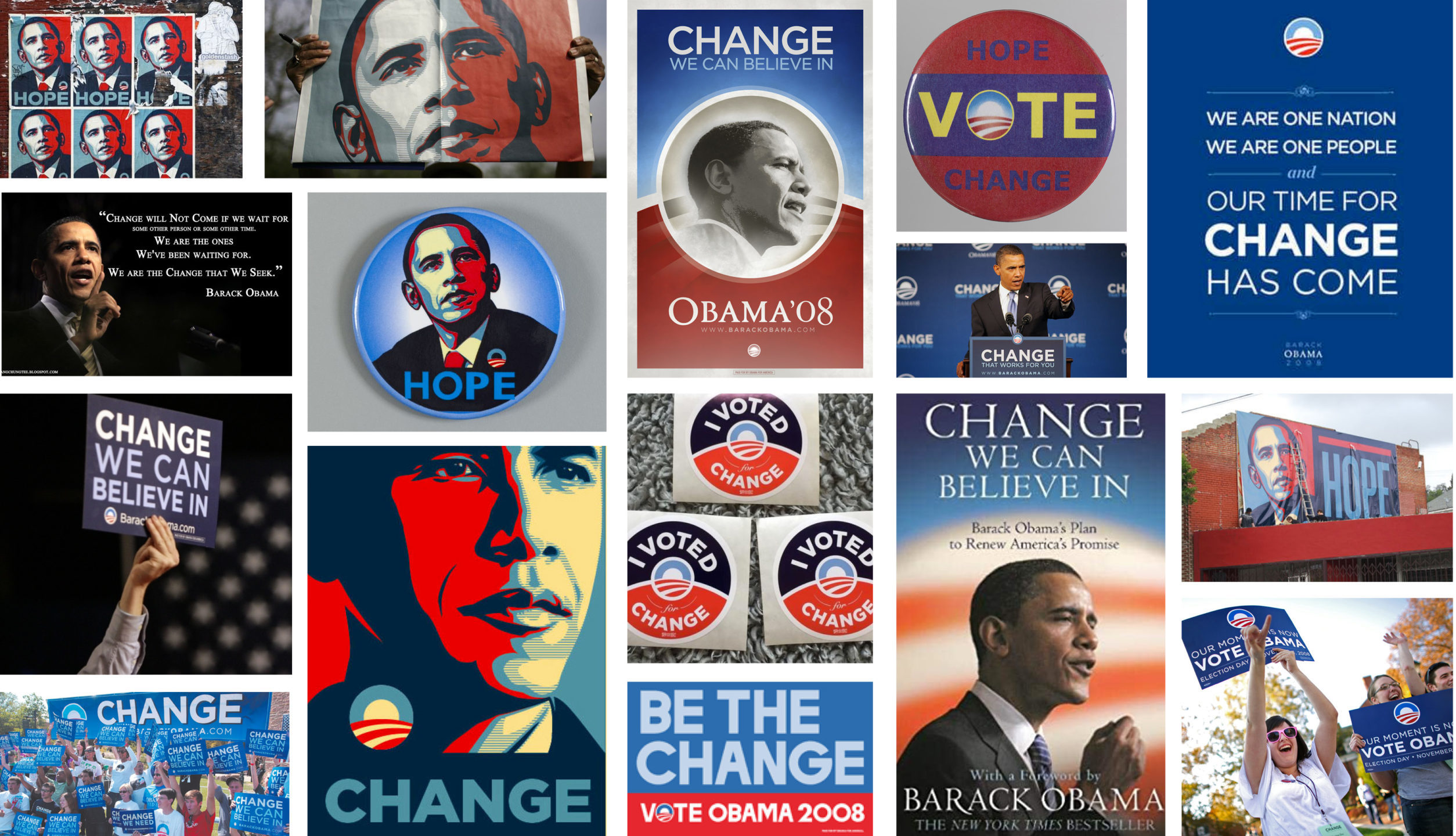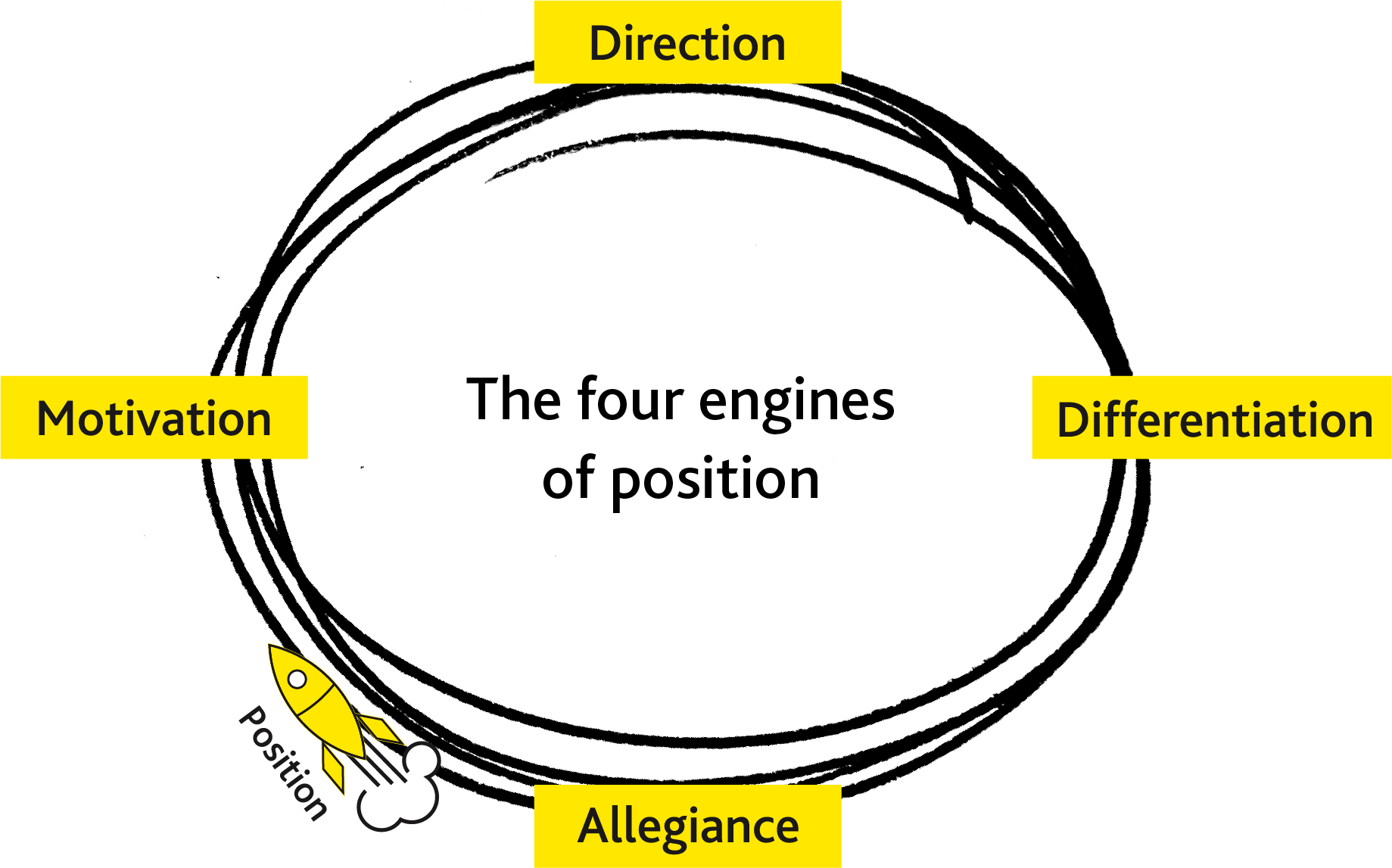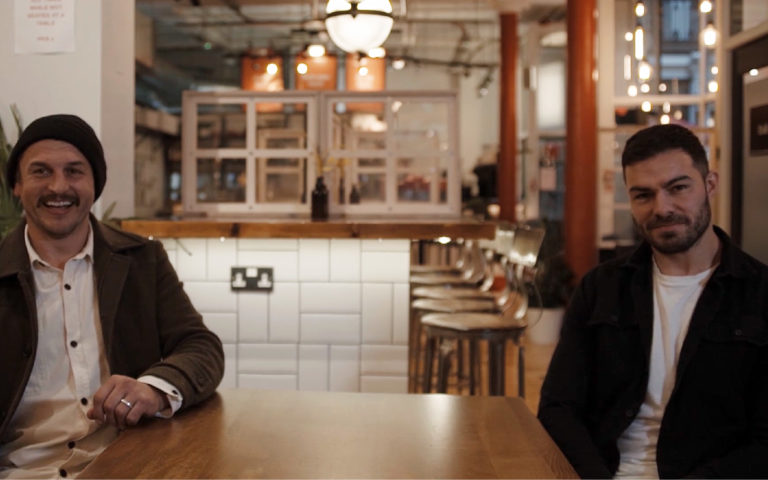Paper #2 | The four engines that make positions fly
You can sense when an organisation has momentum. There’s an aura about its people. A positivity. A preference for action over procrastination. Every success breeds more success. When brands grow exponentially, they seem to have an unstoppable momentum. While we know momentum is important, understanding its nature and how to create it is much harder. Momentum is the product of many things, but position is a vital catalyst for four reasons.
Motivation
In the early 1900s, Frederick Winslow Taylor developed his theory of scientific management. He advocated treating organisations like machines, full of rationally motivated individuals who need to be rewarded for desirable behaviours and punished for undesirable ones. The world has moved on since Taylor’s day. We now know that people are more motivated by mastery, autonomy and a shared goal that’s larger than themselves – commonly referred to as “purpose”.
Purpose has become a buzz word, and is often incorrectly taken to mean “having a social purpose”. Its origins and original meaning can be traced back over 50 years to Chester Barnard. In his 1968 book, he states that one of the essential functions of the executive is “to formulate and design purpose”. The sense of interdependence that comes from a shared purpose is critical to an energised, productive and innovative team. As the story of JFK and the NASA janitor illustrated in our first paper, an effective position provides people with this purpose. Or, as Antoine de Saint-Exupéry put it: “If you want to build a ship, don’t drum up people to collect wood and don’t assign them tasks and work, but rather teach them to long for the endless immensity of the sea.”

Direction
A motivated team is a powerful force, but not if everyone is pulling in different directions. In growing organisations, the leadership can’t be involved in every decision. This is amplified by the 24/7 nature of our globalised world. Brands are always on, constantly communicating. Gone are the days of one campaign and one brochure a year. Now brands are engaging with people in real-time across a huge spectrum of digital and traditional channels. Conveying a coherent image is more challenging than ever.
Positions solve this by providing a framework for decision-making and a narrative for communication. Positions knit together everything the brand says and does. Political campaigns are a good example, particularly landslide victories such as Barack Obama’s 2008 presidential campaign. Such campaigns cover a plethora of subjects, from health and welfare, to the economy and education. They take place at a rapid pace, over a condensed period of time, and are reliant on the message being delivered by a loosely connected set of activists. The most successful campaigns weave their position like a narrative through every action or piece of communication.

Differentiation
During our leisure time, we each process 100,000 words per day. We consume the equivalent of 20 gigabytes of audio-video images. Getting people’s attention is harder than ever. AIDA is an old theory of how advertising works. You must first attract Attention, then foster Interest, which leads to Desire and finally Action. It all starts with attention. Before you can persuade anyone of anything, you need their attention. A position that is different attracts people’s attention.

Difference can sometimes be achieved through spin. This is not true differentiation of the type that leads to sustained competitive advantage. Positions should sprout from something fundamentally different about who the brand serves, what it offers, or both. Perhaps the brand has a similar offer to others, but serves a demographically or geographically different market. Or perhaps it’s focusing on the same market, but providing a different offer in terms of price, features or performance. Capturing this difference in a position attracts attention, builds a reputation and ultimately leads to defendable and sustainable competitive advantage.
Allegiance
Just as positions can energise employees, they can also create a deep connection with customers. People are more likely to do business with, and become loyal to, brands whose values and ethos they buy into. Search for Nike tattoos and you’ll find people who’ve had the Nike swoosh or its famous strapline – Just Do It – inked onto themselves for eternity. This level of loyalty is not about memorable straplines. It’s the behaviours and actions of the brand behind it that they are loyal to. A strapline – if one exists – is merely a reminder of what the brand stands for. It’s the position behind it that people connect with, are loyal to and are ultimately willing to pay more for.

Sometimes people’s affinity with a brand can become so strong that they’ll become evangelists for the brand. Look at brands like Harley-Davidson and the deep connection that the biker community has with the brand. An army of ambassadors spreading a brand’s news is a powerful force. In recent times, social media has amplified the power of word-of-mouth. A community of believers is more effective than ever before.
The snowball effect
Each of the four engines of position acts on the others. A highly motivated team all working towards the same goal starts to create noise in the market. This leads to differentiation and, in time, allegiance. As employees start to experience this allegiance, it renews their energies and reinforces their commitment to the direction: success breeds success. This in turn creates more differentiation and more allegiance. The upshot is a virtuous circle of momentum – like a snowball rolling down the hill, increasing in mass and velocity all the time. Leaders often talk about the importance of momentum to success. Positions, powered by the four engines, are a catalyst for momentum and rapidly accelerating growth.

Coming next
Next in this series of Position Project Papers we’ll be revealing the three black holes of position and explaining why positions fail. If you can’t wait to start thinking about your own position, then our Position Power Tools are the ideal place to start – particularly our Calculator, which is a free self-assessment tool to measure the power of a brand’s position and assess its strengths and weaknesses. Available at https://squad.co/position-project/tools/
Click below to download your Ignition Calculator
Download
Paper #1 | Position is a rocket that will fly you to the moon
The first in our series of Papers that will reveal how to find, take and sustain a powerful position. They’ll lift the lid on how positions are a creative exercise as much as a strategic one. And we'll show you how to escape PowerPoint decks and create a position with unstoppable momentum to power your growth. First up in Paper #1 is the space race – the ultimate example of why positions really can fly you to the moon.

Film & Podcast | Jon Wilkin & Mark Flanagan – Taking a position on coffee
Pot Kettle Black burst onto the Manchester hospitality scene in 2014 and has since expanded across the city. All the while founders Jon Wilkin and Mark Flanagan have continued to play rugby league at the top of the professional game. We sat down for a coffee to talk about how finding their position unlocked their potential.


